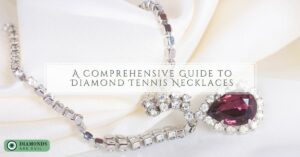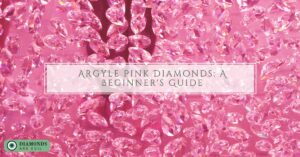Diamonds are forever. They are all I need to please me. They can stimulate and tease me. They won’t leave in the night. I’ve no fear that they might desert me.
A theme song from the movie ‘Forever Diamonds’ performed by Shirley Bessie, illustrates the passion for those precious stones such as synthetic diamonds. The film, starring Sean Connery, is one of the classic James Bond films. A lesser known fact to many is that the background to the romantic action movie is far darker than can be guessed. The film is based on a book written by writer Ian Fleming in the 1950s.
Fleming based the plot on real events that took place in Sierra Leone. On those days, foreign mining companies cynically exploited internal instability, and, under civil wars, bought diamonds cheaply, while locals committed atrocities to maintain control of the mines. Events such as those that Fleming documented in Sierra Leone have become something that, in one form or another, has been accompanying the diamond industry for 7 decades. African countries such as Sierra Leone, Congo or Liberia have paid and are paying heavy prices in the name of eternal passion for diamonds. Because there are synthetic diamonds for sale at affordable prices for every pocket and with the same visibility and prestige.
Synthetic Diamonds for sale – Caution ‘Blood Diamonds’
The ferocious exploitation of Western mining companies by the new and unstable African countries cause the market to be flooded of these diamonds. At one point, the issue rose to the global agenda and international treaties and regulating diamond trade were enacted. The diamonds mined in the battle areas were nicknamed ‘blood diamonds’ and their trade was banned. The problem is that even today there are enough realtors willing to take the risk and at the end of the day a lot of ‘blood diamonds’ get ‘bleached’ and find their way to the world’s largest diamond exchanges.
Therefore, as with other issues related to environmental consciousness and corporate responsibility, many people have come to realize that it is impossible to know where each stone comes from and have avoided buying diamonds completely. A bit like the story of killing animals and the fur industry, in some circles diamonds have become unpopular and politically incorrect.
But the passion for diamonds has been part of human culture for almost three thousand years. The diamond is mentioned in the Bible as one of the stones of the breastplate that wore his high priest’s chest, and there are reports of diamond trade in India from the ninth century BC. Resistance to ‘blood diamonds’ was strong, but the desire for diamonds also did not subside. Then remember that there is a way through which this circle can be quadrupled by the production of synthetic diamonds for sale.
Grow a synthetic diamond in the laboratory
In 1954, regardless of the issue of ‘blood diamonds’ that was then in its infancy and certainly not on the public agenda, General Electric succeeded in producing the first artificial diamond.
The process was based on the development of a special furnace capable of producing 70,000 atmospheres and a temperature of 3,000 degrees Celsius – conditions that simulate the conditions that exist in the soil that allow the diamonds to develop naturally.
When a small piece of graphite (chemically a carbon) was introduced into this facility, the pressure and temperature made it a diamond for everything. When the technology was invented, it was able to produce only very small diamonds, and in any case there was no shortage of natural diamonds and no public awareness and sensitivity involved in ‘blood diamonds’.
That is why no one thought of opening a synthetic diamond production line as a replacement for the gemstones embedded in jewelry such as diamond necklaces, tennis bracelets and diamond earrings.
Thus, in the first decades of technology development, synthetic diamonds were used primarily as a substitute for diamonds used in industry. It is important to note that over the years the technology for diamond growing has evolved, and today the leading companies in the field know how to produce fine-sized diamonds of excellent quality.
It was the protest against the ‘blood diamonds’, which severely damaged the reputation of the natural diamonds, which led to the lab’s diamonds moving to the forefront and gaining their special branding. Today, ‘laboratory diamonds’ are considered ‘ethical’ diamonds, which have certainly not been sold under dark circumstances. In addition, these diamonds are considered environmentally friendly compared to the mining industry known as a large polluter that leaves large ‘pits’ in the field, utilizes water resources and damages entire ecological tissue. That’s why synthetic diamonds for sale have become very trendy for environmentalists.
There is really no difference between natural and synthetic
We live in an industrialized and modern world and that is precisely why we have a longing, almost nostalgic, for the jealous and the natural. The modern “natural” ethos is a standard of quality – a pure thing that the modern man has not spoiled. This romantic perception has led most people to be convinced that the natural product is necessarily ‘better’ than the synthetic product. The truth is that a molecule is a molecule.
Or in the case of the diamond, a pure carbon formed in a certain way. Let’s say it directly – chemically and physically “natural diamond” and “synthetic diamond” are the same material. exactly. There is no difference between ‘natural diamond’ and ‘synthetic diamond’. In fact, with the naked eye an expert will also find it difficult to discern which diamond is a ‘real diamond’ and which diamond is a synthetic diamond, a special instrumentation is needed to determine the type of diamond. As far as anyone looking at the diamond rings is concerned, there is no difference. A diamond is a diamond and it doesn’t really matter if it is ‘natural’ or ‘synthetic’
After saying that, it is common for diamond and jewelry sellers to mark the source of the diamond. To a large extent, this diagnosis justified the existence of synthetic diamonds in the jewelry industry in the first place. Although among environmentalists there is a clear preference for synthetic diamonds, and still, most people are captivated by the romantic false consciousness and prefer the “natural diamond”.
Thus, philosophically, even though the two stones are the same, the difference probably exists, and whoever buys a diamond also buys a ‘story’. Most people buy jewelry to give them an act that is also symbolic, and this need for the ‘story’ of the stone that has formed millions of years in the earth’s soil has more charm than the ‘story’ of the synthetic stone created within a week in the lab. The fact that the story of some natural diamonds also includes cruel exploitation of children usually does not come to the mind of those who are looking for the perfect stone for a romantic gesture
Synthetic diamonds for sale – no imitation, real diamond
Another point that creates a great deal of confusion in the context of ‘lab diamonds’, is that many years before ‘lab diamonds’ appeared on jewelry exchanges, there were (and are) very much in the market of ‘diamond imitations’. Gems, some of which are natural and some products of industrial production, have been defined as ‘diamond imitations’. Some of these imitations, such as the zirconia, are very similar in appearance and diamond properties, though chemically and physically very different from diamonds. However, the presence of these stones in the market is confusing, and it turns out that many people mistakenly believe that zirconia is actually a ‘synthetic diamond’. To be sure, zirconia is not a diamond, it is a diamond imitation; A ‘laboratory diamond’ is not an imitation, it is a diamond for anything that is simply created by artificial means.
As we have noted, although there is no apparent difference between ‘laboratory diamond’ and ‘natural diamond’, there is a clear preference for natural diamonds. Estimates say that about half a million carats of synthetic lumens are distributed every year on the market, which is just a drop in the sea in a global market that rolls about 150 million carats of diamonds.
Contrary, the preference of natural diamonds creates an opportunity for those that think: a diamond is a diamond, and if that diamond is also the result of ethical and environmentally friendly production then in is much better. In most cases, synthetic lumens are sold at a price that can sometimes be 30% lower than natural diamonds, in the same carat and with the same cutting and polishing quality. Given that no one can guess that the 3-carat diamond-studded engagement ring studded with synthetic diamonds is a very lucrative deal.






